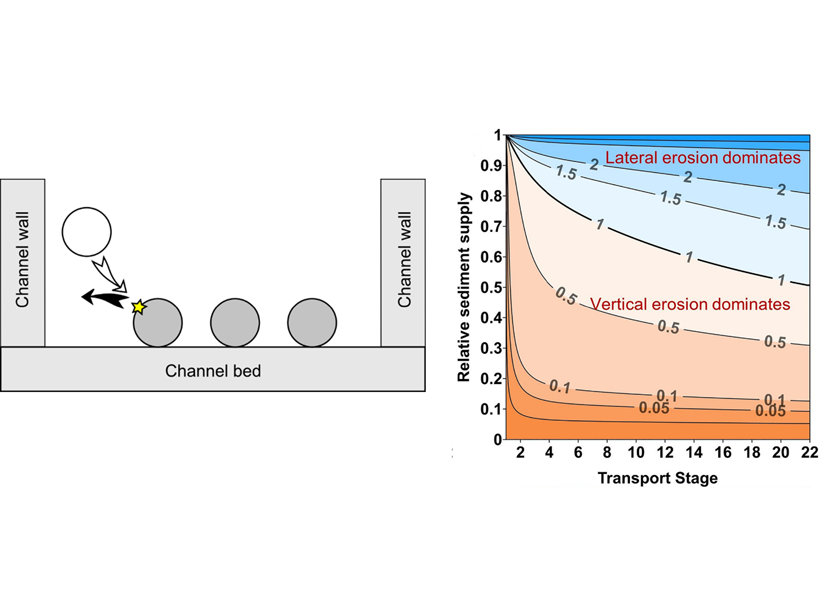Source: Journal of Geophysical Research: Earth Surface
The width of bedrock channels is a key factor controlling erosion and transport processes in mountain rivers. Channel width controls flow dynamics, the force exerted on the riverbed, and therefore erosion and sediment transport rates. A narrowing river will concentrate the flow over a small area, potentially enhancing sediment transport and erosion rates, and may generate obstructions. Conversely, a widening river may undermine the hillslopes and make them more unstable, leading to increased hillslope erosion and sediment supply.
Bedrock riverbed and banks are commonly eroded by the repeated impacts of sediment grains during floods. While some models exist that relate the rate of vertical incision to a river’s sediment flux and grain size, the influence of these parameters on the erosion of bedrock walls (and therefore on channel width) is not as well understood.
In an earlier paper, Li et al. [2020] proposed a model that predicts the erosion of bedrock walls through repeated impact by sediment grains by tracking the trajectory of each grain, but such models require huge computational power and time. In a new paper, Li et al. [2021] now provide an analytical solution, that is, a series of equations that replicate the results of the earlier model without needing to track every single grain.
This new model is much faster and can easily be integrated in models of landscape evolution, thus providing a new tool to explore more completely the interactions between sediment flux, grain size, channel width and the propagation of perturbations along rivers and up valley sides.
The model shows the circumstances in which one may expect rivers to narrow or widen as a function of how much sediment is coming through the river and what its grain size is, and is tested against a real river, Boulder Creek, in California.
Citation: Li, T., Venditti, J. G., & Sklar, L. S. [2021]. An analytical model for lateral erosion from saltating bedload particle impacts. Journal of Geophysical Research: Earth Surface, 126, e2020JF006061. https://doi.org/10.1029/2020JF006061
—Mikaël Attal, Editor, JGR: Earth Surface
Text © 2021. The authors. CC BY-NC-ND 3.0
Except where otherwise noted, images are subject to copyright. Any reuse without express permission from the copyright owner is prohibited.

